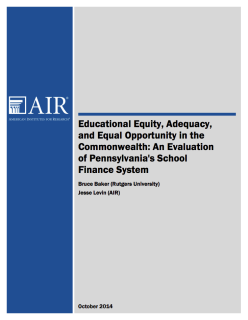Hold Harmless Education Finance Policies in the U.S.: A Survey

In producing the only 50-state survey of “hold harmless” school funding, Michelle Atherton and Meghan Rubado have confirmed that Pennsylvania is an outlier in the degree to which it relies on the practice of providing school districts with the same funding as in the previous year even if their student population has declined. In fact, Pennsylvania was the only state Michelle and Meghan could find that guarantees losing districts a share of any new funding that becomes available, a practice sometimes called “hold harmless plus.” As a result, per-student funding in districts with shrinking enrollments goes up even as the per-student funding of districts with growing enrollments declines. The authors have simultaneously catalogued states that our Basic Education Funding Commission may want to examine more closely for ways to mitigate or phase out hold harmless funding in the future, a goal that was espoused by a number of commission members at our symposium on this topic October 3 in Green Tree. Given the large unfunded pension liabilities and property tax pressures all districts face, there are policy as well as political reasons for not taking funds from districts that have benefitted from hold harmless. But as noted in a CORP Commentary last spring, hold harmless funding and the $29 billion unfunded liability of the school pension system are the two large political costs of Pennsylvania school finance, and both must be forthrightly addressed if a fairer state formula is to be fully effective.





